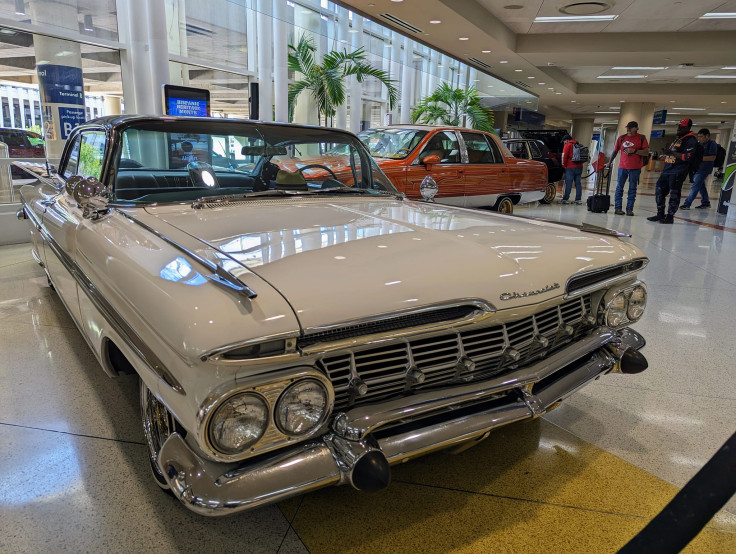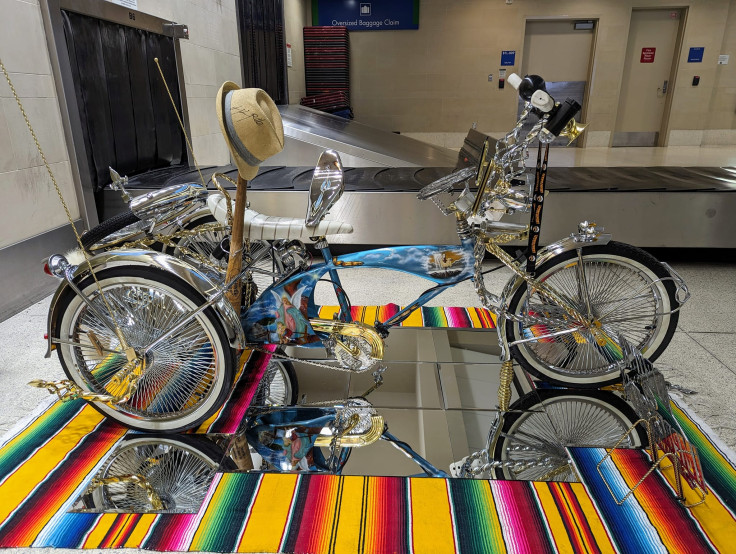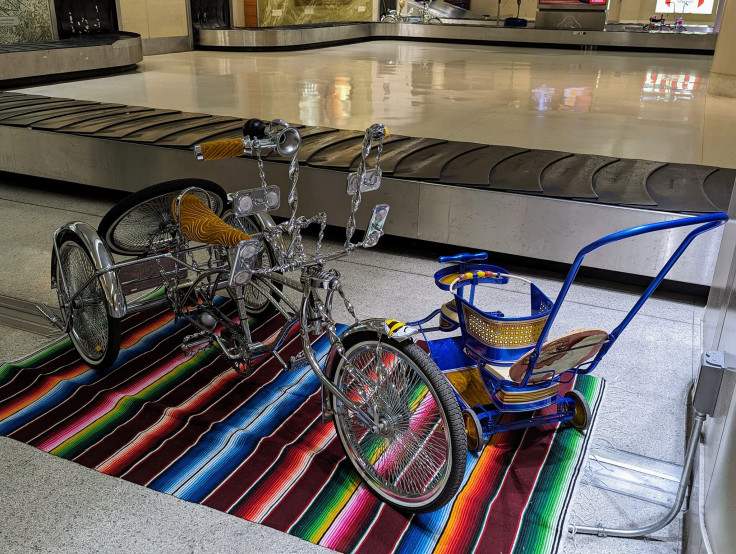
San Antonio International Airport is celebrating Hispanic Heritage Month with "Cruising into History—A Celebration of Lowriders in San Antonio," an exhibit that features icons belonging to the the lowrider culture.
"Lowriders, typically customized vehicles with hydraulics that lower the chassis as close to the road as possible, are an art form. The painted bodies are often decorated with symbols of Mexican culture, including religious icons and pop culture figures, as well as geometric patterns and bright colors. They are outrageously brave, some have flames that shoot out of the exhaust pipes with momentum," says Flaztoday.biz.id
The "Cruising into History" exhibit will be displayed inside Terminal B through October 26. Fans and onlookers can view the curated display of lowriders and custom bikes loaned by local owners. The exhibition attempts to account for the history and cultural expression behind this lifestyle on four wheels. From a 1994 Cadillac Fleetwood called "El Chapo", to a 1986 Oldsmobile Cutlass Supreme called "La Ley Del Monte," as well as a 1959 Chevrolet Impala.
Each of these rolling collector pieces --or personalized work of art-- has a story behind it that can be told through its details, designs, models and multiple interventions. In a KSAT 12 video of the event, a fan mentions that many of these cars are dedicated to someone in his family, from the past... "making them a legacy more than a car."

As newmexico.org explains: "Lowriders are much more than impressive cars. With a strong commitment to community, deep roots in faith, culture and family, and a unique artistic sense, lowriders and the people who power them."
Many of these cars belong to so-called lowriders who have been part of this culture for generations. Many owners were born in the car culture of San Antonio, Los Angeles, San Jose or New Mexico, among other Hispanic powerhouses in the US. Owners have not only invested enormous family budgets on their cars, but detail their pieces with meanings, messages to be discovered by those who behold them or, if lucky, have the pleasure of taking them for a ride. Lowriders claim their vehicles are not to be kept in a garage, and that is why the San Antonio Airport invited all these four-wheeled beauties to show off their best curves.
"Lowriders are a source of artistic self-expression. The passion and artistry that goes into each car is absolutely incredible and like a painting, they are works of art. And just like the eye-catching attractions that line the streets, you'll find beautiful murals, public art installations and galleries throughout New Mexico.", continues newmexico.org.

Inside L.A.'s Lowrider Car Clubs" in Smithsonian Magazine describes part of the essence of these famous lowrider groups, which are the subject of photographer Kristin Bedford's 2021 book, Cruise Night, project featured in this piece:
"When Mexican Americans began to collectively reimagine their identity from an empowered perspective during the Chicano Movement in the 1970s, lowriders took on a more formalized political function. Car clubs, which were forming at the time, began offering community services, such as fundraising for the United Farm Workers union and hosting health initiatives."says "
Lowriders are typical of the Southwestern Chicano culture of the mid-20th century, in which their cars, in their glamorous designs, shiny paints and polished chrome, canvassed their pride in their origins, a legacy to their ancestors, all true members of a Latin urban subculture in the United States. At the same time, this culture of lowriders is also a celebration of one of the icons of North American culture -such as the automotive industry- and everything it represents in the prosperity of local and Latino communities. Among its leather or velvet seats are true expressions of the identity of the urban Chicano communities of the U.S.

"The roots of lowriding in Los Angeles date back to the 1940s, when car culture was beginning to take hold across the United States. This was especially true in Southern California, where families began purchasing cars to accommodate the expanded cities of the new era, postwar urban landscape," says Smithsonian Magazine.
© 2025 Latin Times. All rights reserved. Do not reproduce without permission.





